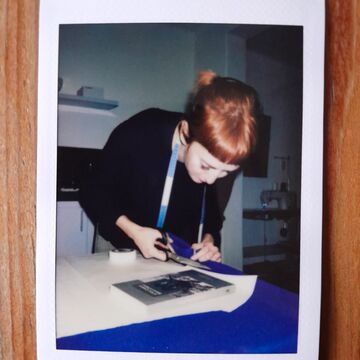|
Description
Led by Bill and Stephanie Sick Distinguished Visiting Professor Fatimah Tuggar and Chair of Fashion Design Abigail Glaum-Lathbury, this co-taught interdisciplinary seminar, examines the interplay between patterns, history, and repetition in the context of contemporary art, technology, and society. Through critical readings, and observational research, students will explore how patterns emerge, persist, and evolve¿whether in abstract forms, natural phenomena, or the predictive algorithms of artificial intelligence and fractals.
Students will consider the implications of working with small versus massive datasets, using both digital and analog approaches to engage with questions of scale, meaning, and limits. The course culminates in a collaborative, community-based project reflecting layered responses to the research. Generously supported by the Stephanie and Bill Sick Foundation, this class includes an on-site research visit to the HiPerGator supercomputer at the University of Florida, offering firsthand insight into one of the world's fastest computational systems, as well as additional class visits from scientists, artists and scholars working in the field.
Learning Outcomes:
Develop critical frameworks for understanding patterns across disciplines.
Gain familiarity with AI¿s role in learning and predicting patterns.
Explore the creative and conceptual potential of data in artistic practices.
Investigate the relationship between human and machine learning, scale, and limitations.
Produce a collaborative, research-driven community project.
|
Class Number
2420
Credits
3
|
|
Description
Through studio visits, and visiting artists lectures students are examining venues through which artists and designers 'are getting the word out'. Students translate and expand their personal design vision by developing critical written materials to create a context for positioning their work. This analysis is directly related to, and in support of, their current studio practice; it references their journals, sources, and visuals, and will become an additional layer, and integral part of the final presentation.
|
Class Number
1982
Credits
3
|

